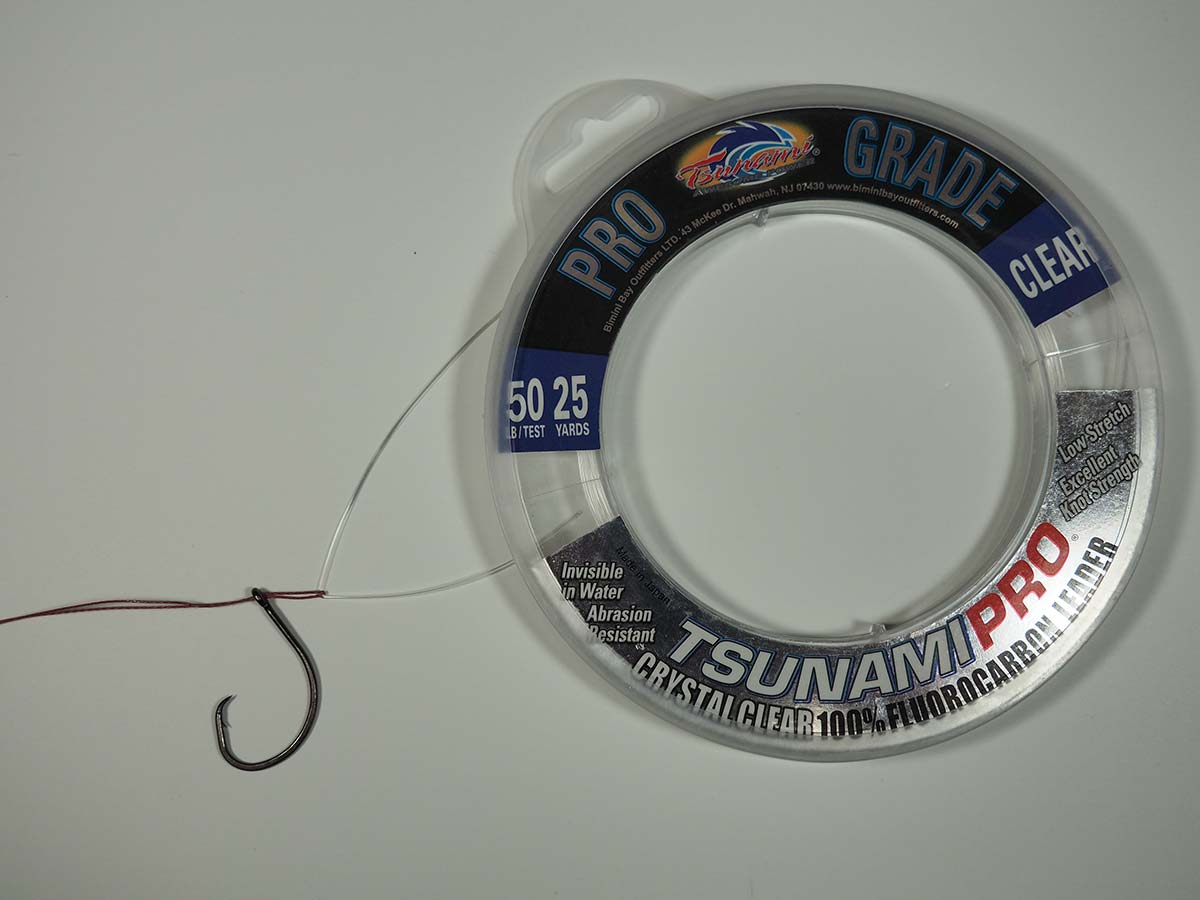Regardless of whether you are using monofilament or fluorocarbon, there are many ways to attach a hook to the mainline.
There are many ways to attach a hook to the mainline and consideration must be taken for how the hook is going to be used and the target species. For example, when using a hook bait for chunking, two of the most popular options are the snell and the Palomar knot. The snell is a very strong option when you will be fishing for quality and not quantity. If you are expecting a few shots of fish during a trip, and retying will be minimal, this is the strongest, most reliable connection. If your trip brings you into frenzied action with lots of break-offs and retying, this is where the Palomar knot becomes paramount.
The Palomar knot is a simple, easy to tie, and very strong; it’s the perfect knot for quickly retying and getting back into the action. Think about mahi, bluefish, or schoolie striped bass. You may have a limited time of lights-out fishing that will require you to tie dozens of hooks within an hour, especially if you are using a light leader. Often the leader breaks as the fish bounces around on deck. Just slide it into the box (hook and all), retie a new hook and get back in the game; retrieve the hooks at the filet table.

When using small hooks and heavy leader (or as we get older all hooks) a simple trick to start the Palomar knot is to use a small, single piece of braided line, sliding it into the eye of the hook to go around the doubled leader and feed it back into the eye. Pull the doubled leader through the eye and tie an overhand knot. Once tied the loop formed is fed back over the hook. Moisten and snug it up. Using a longer leader allows you to keep cutting back the same leader for the entire trip (one less connection to re-tie.)
When using live bait it’s advantageous to select a knot that does not restrict its swimming action. The best way to accomplish this is with an open-ended loop knot that does not slip. There are two main go-to knots to use here: the perfection knot and the Lefty loop knot. A Lefty loop knot is a great option for these situations. Leaving the loop open allows the hook to swing freely, this in turn allows your bait to change direction and swim naturally as it tows your line around.
Good knot tying is unfortunately becoming a lost art. The “I want it now culture” lends itself to relying on tackle shops and manufactures to produce simple, out-of-the-package ways to go fishing. Do yourself a favor and master a few simple knots. Teach your friends and people you fish with, especially kids. If you fish on head boats or charters, stop and ask the captain or mate to show you what, how, and why they are doing what they are doing. Get involved and become your own champion!




